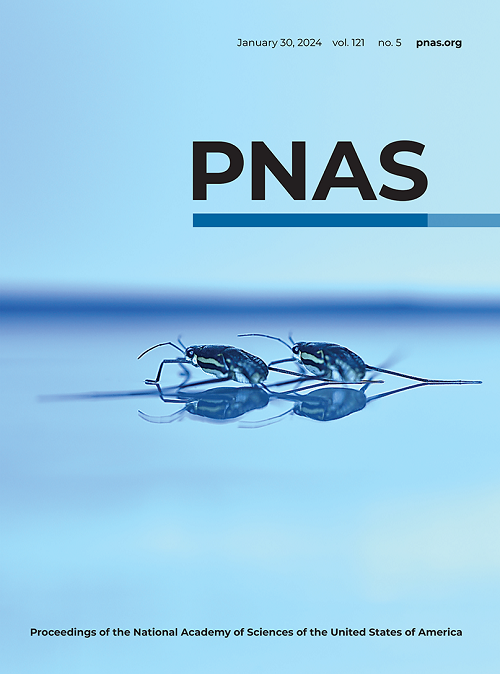eIF4A控制雌激素受体α的翻译,是晚期乳腺癌的治疗靶点
IF 9.4
1区 综合性期刊
Q1 MULTIDISCIPLINARY SCIENCES
Proceedings of the National Academy of Sciences of the United States of America
Pub Date : 2025-07-21
DOI:10.1073/pnas.2424286122
引用次数: 0
摘要
大多数乳腺癌依赖于激素刺激的雌激素受体α (ER)活性,并且对ER抑制敏感。抗性可由编码内质网基因(ESR1)的激活突变或下游靶标的再激活引起。较新的内质网拮抗剂偶尔显示出疗效,但作为单一药物长期来看大多无效。在这里,我们发现内质网翻译与eIF4E/cap无关,但对翻译起始因子eIF4A的抑制剂敏感。EIF4A抑制降低ER和细胞周期调节因子如cyclin D1的表达。这导致了不依赖配体的乳腺癌模型的生长抑制,包括那些由ER突变体和融合蛋白驱动的模型。通过添加内质网降解剂氟维司汀,提高了疗效。联合用药可进一步降低ER表达,抑制肿瘤在体内和体外的生长。在一项早期临床试验(NCT04092673)中,eIF4A抑制剂佐他替芬与氟维司汀或氟维司汀加CDK4抑制剂abemaciclib联合用于对这些药物产生获得性耐药的患者。观察到多种临床反应,包括少数持久消退,毒性很小。因此,eIF4A抑制可能有助于治疗ER+乳腺癌对其他方式的抵抗。本文章由计算机程序翻译,如有差异,请以英文原文为准。
eIF4A controls translation of estrogen receptor alpha and is a therapeutic target in advanced breast cancer
Most breast cancers depend on hormone-stimulated estrogen receptor alpha (ER) activity and are sensitive to ER inhibition. Resistance can arise from activating mutations in the gene encoding ER ( ESR1 ) or from reactivation of downstream targets. Newer ER antagonists occasionally show efficacy but are largely ineffective as single agents in the long term. Here, we show that ER translation is eIF4E/cap-independent yet sensitive to inhibitors of the translation initiation factor eIF4A. EIF4A inhibition reduces the expression of ER and cell cycle regulators such as cyclin D1. This leads to growth suppression in ligand-independent breast cancer models, including those driven by ER mutants and fusion proteins. Efficacy is enhanced by adding the ER degrader, fulvestrant. The combination further lowers ER expression and blocks tumor growth in vitro and in vivo. In an early clinical trial (NCT04092673), the eIF4A inhibitor zotatifin was combined with either fulvestrant or fulvestrant plus CDK4 inhibitor, abemaciclib, in patients with acquired resistance to these agents. Multiple clinical responses including a handful of durable regressions were observed, with little toxicity. Thus, eIF4A inhibition could be useful for treating ER+ breast cancer resistant to other modalities.
求助全文
通过发布文献求助,成功后即可免费获取论文全文。
去求助
来源期刊
CiteScore
19.00
自引率
0.90%
发文量
3575
审稿时长
2.5 months
期刊介绍:
The Proceedings of the National Academy of Sciences (PNAS), a peer-reviewed journal of the National Academy of Sciences (NAS), serves as an authoritative source for high-impact, original research across the biological, physical, and social sciences. With a global scope, the journal welcomes submissions from researchers worldwide, making it an inclusive platform for advancing scientific knowledge.

 求助内容:
求助内容: 应助结果提醒方式:
应助结果提醒方式:


